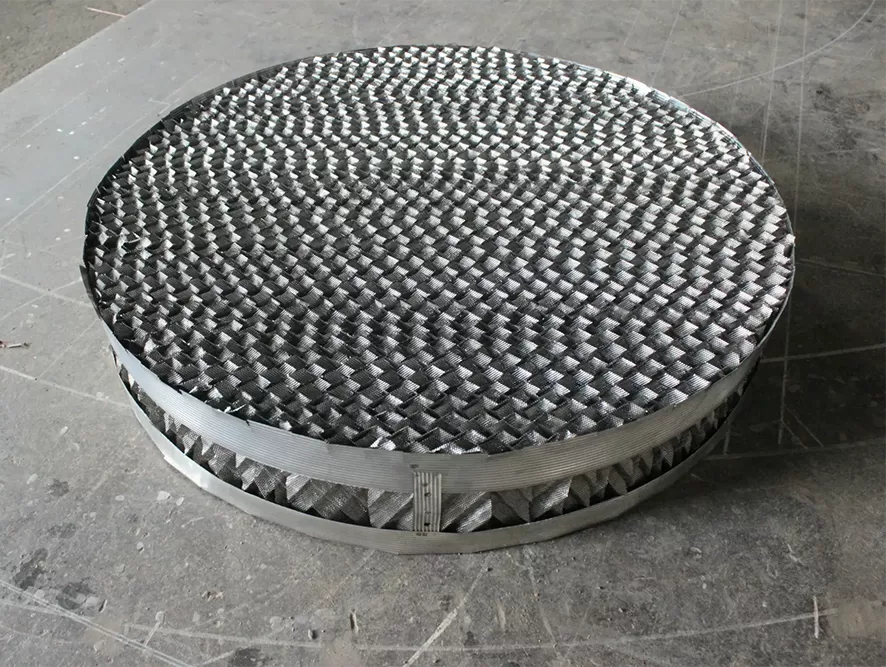Must Structured Packing Be Installed with Wall Flow Rings?
The installation of wall flow rings for structured packing is not an absolute requirement but depends on specific process conditions, tower design, and performance goals. Wall flow rings—also known as wall wipers or liquid collectors—are annular devices mounted between the structured packing layers and the tower wall, designed to address a common challenge in packed towers: liquid maldistribution near the wall.
In large-diameter towers (typically with a diameter exceeding 1 meter), liquid tends to accumulate or flow along the tower wall due to factors like gravitational pull, tower wall roughness, or uneven initial distribution. This "wall flow" phenomenon reduces the effective contact area between gas and liquid phases in the packing, lowering mass transfer efficiency and potentially compromising separation performance. In such cases, wall flow rings play a critical role: they intercept liquid flowing along the wall, redirect it back into the main packing bed, and ensure more uniform liquid distribution across the entire cross-section of the packing.

For small-diameter towers (generally less than 0.5 meters), wall flow effects are often less pronounced. The closer proximity between the packing and the tower wall minimizes significant liquid bypassing, making wall flow rings unnecessary in many cases. Additionally, if the tower is equipped with high-performance liquid distributors that ensure precise initial liquid distribution, or if the packing itself has a design that enhances liquid redistribution (such as built-in redistribution layers), the need for separate wall flow rings may be reduced.
Material compatibility and operational conditions also influence the decision. In processes involving corrosive fluids, wall flow rings must be made from materials matching the packing and tower (e.g., stainless steel for metal packing, plastic for plastic packing) to prevent corrosion. For high-temperature or high-pressure applications, the structural integrity of wall flow rings must be ensured to withstand harsh conditions without deformation or failure.
Another consideration is cost and maintenance. While wall flow rings improve efficiency in large towers, they add to equipment costs and require periodic inspection during maintenance to ensure they remain properly positioned and free from fouling or blockages. In scenarios where separation efficiency is not critical or the tower operates under stable, low-liquid-load conditions, the benefits of wall flow rings may not justify the added expense.
In summary, structured packing does not universally require wall flow rings. Their installation is recommended for large-diameter towers, processes with strict efficiency requirements, or cases prone to significant wall flow. For small towers, systems with effective liquid distribution, or low-demand operations, wall flow rings can be omitted without compromising basic performance. The decision should be based on tower size, distribution efficiency needs, and operational constraints to balance performance and practicality.

